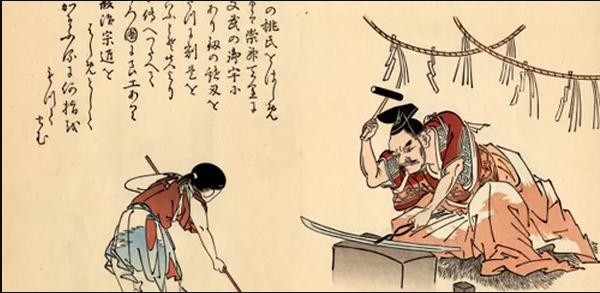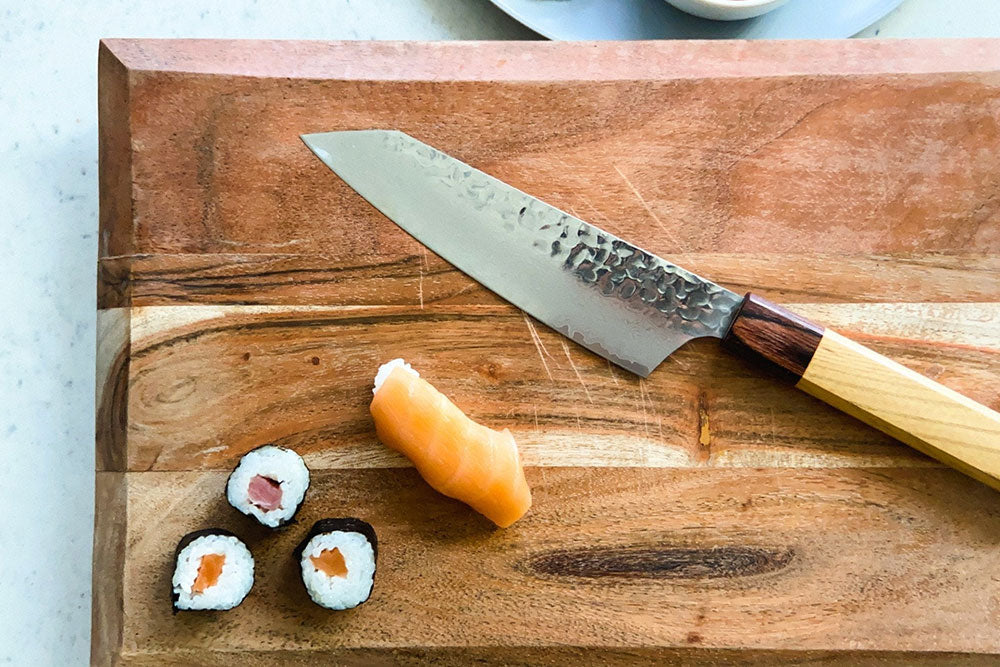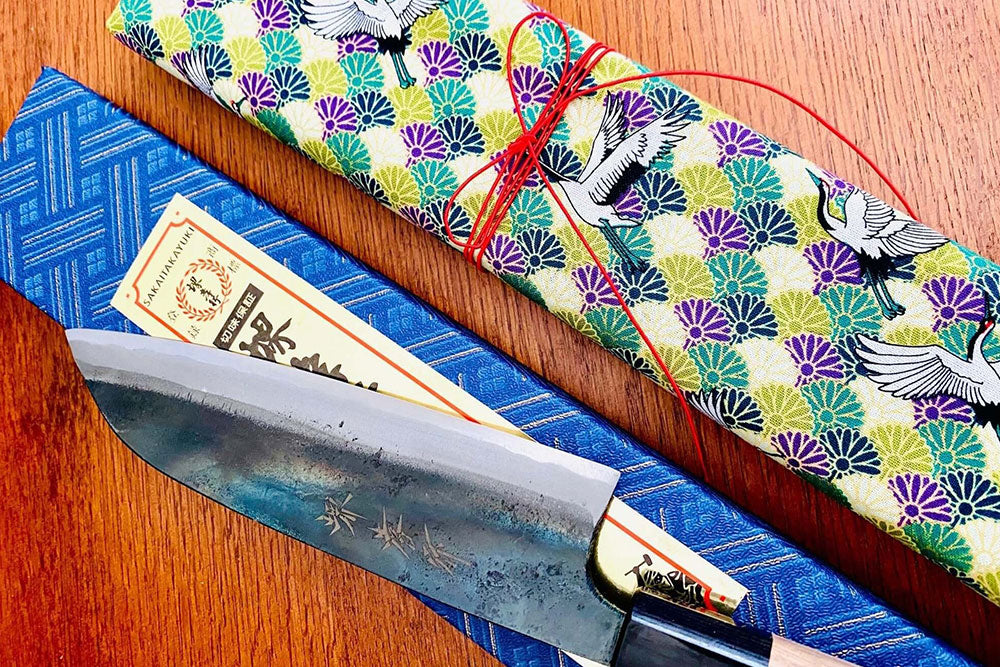
Japanese Knives Vs. Western Knives: Key Differences Explained
There’s one debate that keeps resurfacing in modern kitchens: Japanese knives vs Western knives. It's a genuine comparison rooted in culture, technique, and function. These two knife traditions have followed completely different paths in both form and philosophy. Their differences affect everything from grip to edge retention to the quality of your cuts.
Japanese kitchen knives are born from centuries of swordsmithing, where blacksmiths refined their approach with each generation. The result is a blade that values sharpness, detail, and the kind of precision that can transform food prep into an art form. On the other hand, Western knives are built for versatility and resilience. They do a bit of everything, and they do it with weight, power, and a design meant to last through rough use.
Today, with more people refining their cooking skills at home, choosing the right knife is about more than convenience. It’s about performance. It’s about how a knife feels in the hand and how it performs when you need consistency, clean slices, or heavy chopping force. The better you understand what each knife is made to do, the easier it becomes to match the tool to the task.
Understanding Japanese Knives vs Western Knives in Everyday Use
The contrast between these two knife styles doesn’t begin and end with their appearance. It runs into the steel, the sharpening angle, the weight, and the way each knife is meant to move through food.
Japanese knives are purpose-driven. Each shape, each grind, and each handle exists to serve a specific task. From slicing sashimi with a razor-thin Yanagiba to preparing delicate garnishes or filleting small fish, Japanese knives cut with intention.
Western knives take a broader approach. A standard chef’s knife can handle most ingredients (vegetables, meats, herbs, or even bones) with minimal adjustment. While they may not have the finesse of a specialized Japanese knife, they’re built for endurance and flexibility. Western styles often serve as that all-around tool for anyone who wants one knife to handle most prep work.
The difference in these tools often comes down to how you cook. Do you value delicate precision and sharpness that lasts? Or do you prefer a knife that’s easier to maintain, one that can withstand a beating and continue to cut?
Craftsmanship and Steel Composition
Japanese knives often utilize high-carbon steels, such as White Steel (Shirogami) or Blue Steel (Aogami). You can sharpen these metals to an extremely fine edge. These steels are harder than typical stainless steel, which means they hold their sharpness longer. However, this hardness comes with a trade-off: reduced flexibility and increased susceptibility to chipping when the knife is used on bones or hard surfaces.
Western knives often use softer steel alloys including stainless steel varieties. These materials resist rust and corrosion while standing up to more wear and tear. Though they don’t deliver the same razor-sharp edge or long-lasting sharpness as harder steels, they offer added durability. Western-style blades handle tougher materials without cracking and require less careful handling or maintenance.
Japanese blacksmiths take a different path. Many still follow hand-forging techniques rooted in samurai-era traditions. A single blade may pass through more than 60 manual steps, from heating and hammering to precise sharpening and polishing. This dedication to craft creates not only a highly functional tool but also one with a distinct identity.
Western knives are more likely to be mass-produced. While many premium brands present forged options, a significant number are stamped from sheets of steel and then machine-sharpened. This lowers production cost and speeds up manufacturing. However, the result often lacks the refinement found in handcrafted Japanese blades.
Shape, Grind, and Blade Geometry
The blade geometry of Japanese knives speaks to their purpose. A knife like the Gyuto resembles a Western chef’s knife but has a thinner profile and flatter edge.
It’s meant to slice cleanly with less pressure, ideal for vegetables, meats, and herbs. A Nakiri has a flat edge to deliver precise vegetable cuts. Meanwhile, the Yanagiba is long and narrow to cut sashimi in a single pull without tearing the delicate protein.
These knives often feature a more acute bevel, usually 15 degrees or sharper. This narrow angle produces a keener edge, which allows for surgical precision. However, they also require proper technique and maintenance. Many Japanese knives are also single-bevel, which means only one side of the blade is sharpened. This design directs the cut more cleanly and is important for tasks such as slicing fish for sushi or trimming meat.
Western knives feature a wider bevel, usually between 20 and 25 degrees. This broader angle adds strength and resilience to the edge, though it reduces cutting precision. The curved blade supports a rocking motion, which aligns with the chopping techniques commonly used in Western kitchens. A thick spine and bolster contribute extra weight and stability and offer the necessary heft when more force is needed.
Handle Styles and Ergonomics
Handle design changes how a knife feels in motion. Japanese knives typically feature wa-style handles, which are often made from natural wood or composite materials. These handles are cylindrical or octagonal to encourage a pinch grip that improves control and fine movement. They’re lightweight and often allow the user to feel the blade more directly.
Western handles are heavier and built with durability in mind. They often feature full tang construction, where the blade steel extends through the handle for added strength. The grip is contoured to fit the hand and provides stability when cutting through harder foods.
While this design brings comfort during heavy-duty prep work, it gives up some of the nimbleness and precision that characterize Japanese knife styles.
Sharpness and Edge Retention
Japanese knives are sharper out of the box. It’s due to the fine-grained steel and acute edge angle. This sharpness makes quick work of everything from thin-skinned tomatoes to fatty tuna. The sharp edge also stays sharp longer, especially if the blade is honed and stored correctly.
Western knives are easier to resharpen at home, especially with the aid of guided tools or pull-through sharpeners. Their softer steel dulls more quickly, but it can be quickly restored with a honing rod. That makes them more forgiving for users who don’t want to spend time maintaining their edge with whetstones.
Weight and Cutting Style
Japanese knives are generally lighter, which supports clean, straight cutting without extra effort. This also makes them ideal for tasks that involve repetitive slicing or fine prep work. The lighter design reduces wrist fatigue and gives users more control for tasks like julienning or chiffonading.
Western knives feel heavier and more grounded. That weight helps during tough jobs, such as breaking down poultry or chopping large root vegetables. You can use the weight of the blade to apply force. This makes it better for cooks who want to power through dense ingredients.
These differences affect how each knife is used. Japanese blades work best with clean pull cuts. Meanwhile, Western knives accommodate the rocking motion common in many Western culinary techniques.
Maintenance and Longevity
Japanese knives reward care. Their sharper edges and high-carbon steel deliver superior performance but require thoughtful use.
They should be washed by hand, dried immediately, and stored in a protective sheath or block. Avoid cutting bones, frozen food, or using glass cutting boards. Sharpening is best done with a whetstone to preserve the edge and honor the blade’s original shape.
Western knives are easier to live with. They can handle more brutal treatment, resist rust more effectively, and don’t chip as easily. You can wash them less carefully, toss them into a drawer, and use them on a broader variety of cutting surfaces without as much concern. Their trade-off is performance: they require frequent honing and sharpening to stay functional.
Choosing the Right Knife for Your Style
No single knife is right for every cook. Japanese knives are best for those who value sharpness, technique, and precision. They give skilled users more control and deliver cleaner results, especially on soft or delicate ingredients. If your cooking leans toward sushi, thin vegetable prep, or refined plating, Japanese knives will feel like an extension of your hand.
Western knives are ideal for general-purpose prep. They’re strong, reliable, and easier to maintain. If you want a knife that can chop through squash, slice pork, and mince garlic all with one blade, a Western chef’s knife fits the bill. You won’t get the same surgical detail, but you’ll gain reliability and ease of use.
Many chefs use both. A Gyuto might serve as a main blade, supported by a Western utility knife or cleaver when brute force is needed.
Our Commitment to Japanese Craftsmanship
Hasu-Seizo is a family-owned business specializing in handcrafted Japanese kitchen knives made by master blacksmiths across Japan. We partner with legendary makers like Sakai Takayuki to bring premium blades to both professional chefs and passionate home cooks.
Our focus is on offering products that deliver actual value: knives that perform at the highest level and represent centuries of Japanese expertise. We carry knives at a variety of price points, including finely crafted options under $200.
Let us help you find the knife that suits your kitchen, hands, and cooking style.


